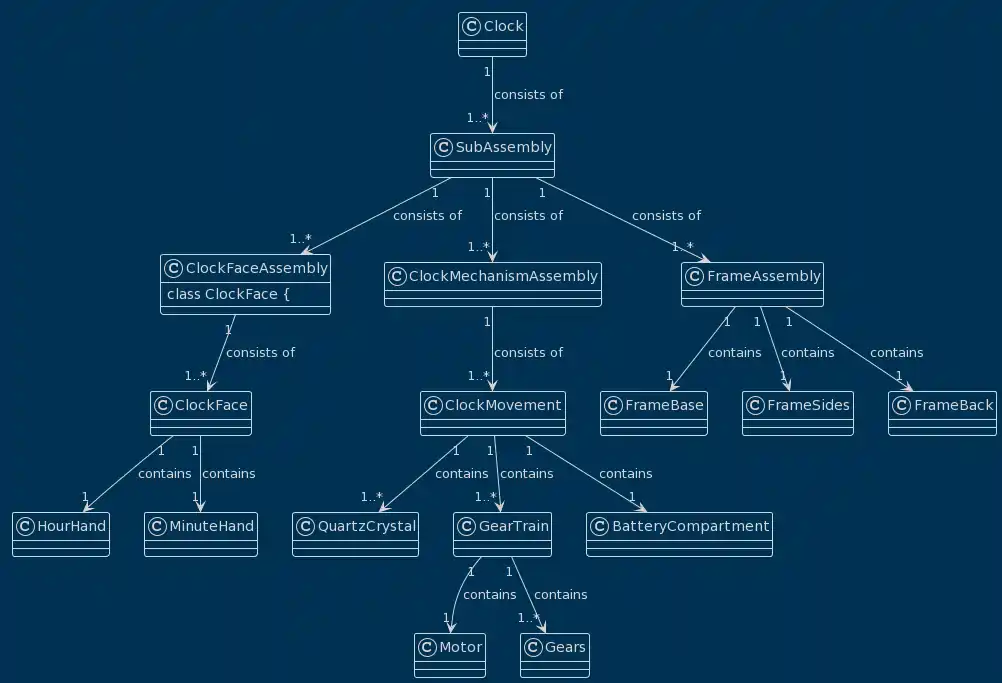Introduction
BOM, is a document that lists all the or parts needed to make a product. It includes information like the quantity of each component required and how they are assembled together.
Think of it like a recipe for building something. Just like a recipe tells you what ingredients you need and how much of each, a BOM tells you what parts you need and how many of each to make a product.
For example, let’s say you want to build a computer. The BOM for the computer would list all the components needed, such as the motherboard, processor, memory, hard drive, and so on. It would also specify how many of each component is required.
The BOM is used by different departments in a company. In production planning, it helps determine the materials needed for manufacturing. In material need planning, it calculates the quantity of raw materials or components needed based on customer demand. In product costing, it helps calculate the cost of the final product by adding up the costs of all the components.
A Bill of Material (BOM) is a crucial component of production planning and inventory management. It is a comprehensive list of all the components and materials required to manufacture a finished product or assembly. The BOM provides detailed information about the quantity, description, and relationship between each component and the final product.
BOM is a master data in production planning that contains information about the list of components and their quantities required to produce an assembly or finished product.
It provides a detailed breakdown of the materials needed for production, including raw materials, sub-assemblies, and finished goods.
The BOM serves as a reference for various functions within an organization, such as material need planning, product costing, and production consumption.
It is used to calculate the required quantities of components for customer demand, determine the cost of production, and track the consumption of materials during the production process.
So, in simple terms, a BOM is like a shopping list for building something, and it helps ensure that all the necessary parts are available for production.
Definitions of Bills of Materials
“A bill of materials (BOM) is a list of all the components and materials required to make a product, along with their quantities and associated information. The BOM includes both raw materials and purchased parts, as well as subassemblies and finished components. It can also include information such as part numbers, descriptions, vendors, lead times, and costs.”
Karl Ulrich and Steven Eppinger
“A bill of materials (BOM) is a listing of all the raw materials, subassemblies, and components required to produce a finished product, along with their quantities and specifications. It serves as a master document for planning and controlling production, purchasing, and inventory. BOMs can be multi-level, reflecting the hierarchical structure of products with subassemblies and components.”
Evelyn L. Peterson and David C. Whybark
“A bill of materials (BOM) is a detailed, organized list of all the parts and materials required to assemble a product. It typically includes the part number, name, description, quantity, source, and cost for each item. BOMs can be presented in various formats, such as tables, lists, or even nested structures reflecting the assembly hierarchy of the product.”
James M. Van Verth and William D. Orth
Types of Bills of Material

- Manufacturing Bill of Materials (mBOM): Specifies the materials and components needed for manufacturing a product. It includes information about quantities, sub-assemblies, and raw materials required in the production process.
- Engineering Bill of Materials (eBOM): Focuses on the design and engineering aspects of a product. It outlines the components, materials, and specifications necessary for the product’s conceptualization and development.
- Service BOM: Lists the parts and components needed for servicing or maintaining a product. It helps in managing inventory for maintenance tasks and ensures availability of required items.
- Sales BOM: Tailored for sales purposes, it highlights the components and features that contribute to the product’s sales pitch. This BOM is often customer-facing and emphasizes the product’s value.
- Assembly BOM: Breaks down a product into its assemblies and sub-assemblies for efficient production. It is used on the shop floor to guide the assembly process.
- Production BOM: Like mBOM, it provides a detailed breakdown of materials and components required for production. It is used in the manufacturing process to ensure the availability of resources.
- Template BOM: A generic structure that can be used as a starting point for creating specific BOMs. It may include common components and serve as a basis for various products within a product line.
Components of a Bill of Material (BOM)
- BOM Header: This contains information such as the BOM number, which is assigned by the system and is used to link the BOM with transaction data and other production planning applications. The BOM header also includes the BOM usage, which determines the application or business function that can use the BOM.
- BOM Items: These are the individual components or materials that make up the assembly or finished product. Each BOM item is assigned an item category, which classifies the item and determines its behavior in the BOM. The item category can show whether the item is a stock item, non-stock item, variable size item, or other types.
- Quantity Data: This includes information about the quantity of each component required to produce the assembly or finished product. The quantity can be fixed, meaning it is always consumed in a fixed amount regardless of the assembly quantity, or it can be variable based on the assembly quantity.
- Scrap and Losses: This refers to any scrap or losses that may occur during the production process. Component scrap can be entered in the BOM or in the material master, and it can be a fixed percentage or vary for different products. Losses during storage, delivery, or transport can also be considered as component scrap.
- Alternate BOM: In some cases, there may be many BOMs for the same assembly or finished product. These alternate BOMs represent different combinations of components that can be used to produce the same end product.
- Variant BOM: Variant BOMs are used when there are different end products that share common or similar components. These BOMs allow for the inclusion of variant parts while maintaining the common components.
BOM provides a detailed breakdown of the components and quantities required to produce an assembly or finished product, allowing for accurate planning, costing, and production consumption.
Create and Manage Bills of Material
To create and manage Bills of Material (BOM), you can follow these steps:
- Start with a comprehensive list of all the components required for your product. This list should include all the necessary parts, such as electronic components, mechanical parts, fasteners, cables, etc.
- Organize the components into categories or groups based on their function or type. This will help you identify and locate the required parts during the manufacturing process.
- Assign unique part numbers or reference designators to each component. This will ensure that each component is identifiable and distinguishable from others.
- Specify the quantity of each component required for the product. This will help in determining the total quantity of each component needed for production.
- Include more information for each component, such as the manufacturer’s name, part description, specifications, datasheets, and any other relevant details. This information will be helpful for procurement and manufacturing teams.
- Update the BOM as changes occur during the design and manufacturing process. This includes adding new components, removing obsolete components, and updating quantities or specifications.
- Use BOM management tools or software to automate the creation and management of the BOM. These tools can help streamline the process, reduce errors, and provide real-time access to the BOM for all stakeholders.
- Share the BOM with relevant departments, such as engineering, procurement, and manufacturing, to ensure everyone has access to the latest version of the BOM.
- Review and verify the BOM to ensure accuracy and completeness. This can be done by cross-referencing the BOM with the actual product design and verifying that all components are accounted for.
- Communicate any changes or updates to the BOM to all relevant stakeholders to ensure everyone is working with the most up-to-date information.
By following these steps and utilizing BOM management tools, you can create and manage Bills of Material for your product, ensuring smooth production and minimizing errors.
Benefits of Using Bills of Material (BOM)
Using Bills of Material (BOM) management tools can provide several benefits for companies involved in the design and manufacturing process. Some of the key benefits include:
- Improved accuracy: Manual creation of BOMs is prone to errors, such as data entry mistakes or missed design changes. BOM management tools automate the process and ensure that the BOM is always up-to-date and accurate.
- Real-time access to information: BOM management tools provide immediate access to the current BOM at any point during the design process. This allows engineering and purchasing teams to have real-time part information and make informed decisions.
- Streamlined communication: BOM management tools help better communication between different departments involved in the design and manufacturing process. Engineering part requests, quantities, and values are transferred to the BOM, reducing the chance of miscommunication or delays.
- Cost and time savings: By automating the BOM creation process, companies can save time and reduce the risk of errors. This leads to cost savings by avoiding delays in manufacturing and ensuring that new parts are available for assembly.
- Paperless manufacturing: BOM management tools provide electronic documentation that can be integrated into a paperless manufacturing system. This eliminates the need for manual data entry and improves efficiency on the manufacturing floor.
- Multi-level BOM management: BOM management tools can handle complex multi-level BOMs, allowing for better organization and management of sub-assemblies. This ensures that all components are accounted for and reduces the risk of missing updates across different sub-assemblies.
Using BOM management tools can improve accuracy, communication, save time & cost. And help a more efficient manufacturing process.
Example of a Bill of Materials (BoM) for a Clock

| Level | Assembly/Sub-assembly/Component |
| 0 | Final Product – Clock |
| 1 | Sub-Assemblies |
| 1 | Clock Face Assembly |
| 2 | Clock Face |
| 2 | Hour Hand |
| 2 | Minute Hand |
| 1 | Clock Mechanism Assembly |
| 2 | Clock Movement |
| 3 | Quartz Crystal |
| 3 | Gear Train |
| 3 | Motor |
| 2 | Gears |
| 2 | Battery Compartment |
| 1 | Frame Assembly |
| 2 | Frame Base |
| 2 | Frame Sides |
| 2 | Frame Back |
This hierarchical structure continues until the individual raw materials or smallest components are reached. For example, a Gear Train may be made up of gears, springs, and other small parts.
The hierarchical BoM provides a structured view of how the final product (Clock) is composed of various sub-assemblies, and each sub-assembly consists of components.
Breaking down the product into levels helps in managing and planning the production process more efficiently.
The lowest level of the hierarchy contains the individual components or raw materials needed for manufacturing.
This hierarchical representation of the BoM is essential for production planning, inventory management, and ensuring that all necessary components are available when needed in the manufacturing process.
Was this helpful?
1 / 0